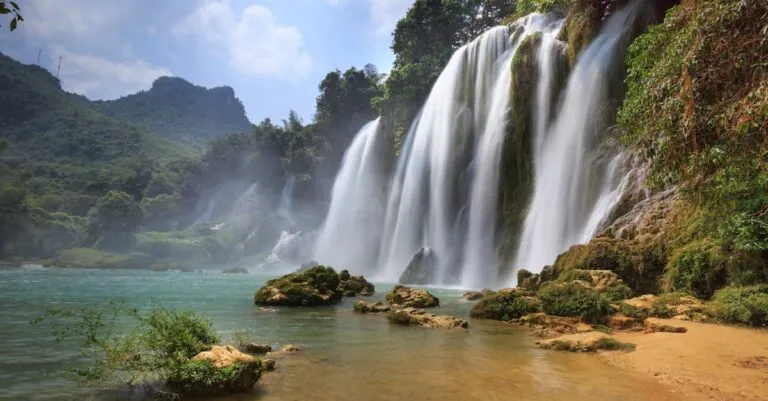Table of Contents
ToggleIn 2025, the world of nomad communities is set to redefine what it means to live and work on the go. Picture this: a vibrant tapestry of individuals who swap traditional office cubicles for breathtaking mountain views and sandy beaches. These modern-day adventurers embrace flexibility while sipping artisanal coffee in a bustling co-working space or lounging in a hammock.
Overview of Nomad Communities 2025
Nomad communities in 2025 represent a significant evolution in lifestyle and work culture. These communities prioritize flexibility, enabling members to seamlessly balance professional and personal pursuits. Emerging trends indicate a preference for remote work environments that blend leisure and productivity, often set in breathtaking landscapes.
Members of these communities actively seek out locations that inspire creativity. Picturesque beaches, serene mountains, and vibrant urban centers serve as backdrops for their daily routines. Access to co-working spaces fosters collaboration among diverse individuals, allowing them to exchange ideas and foster innovation. Shared experiences, such as attending local events or engaging in outdoor activities, strengthen community bonds and enhance the overall quality of life.
Technology plays a central role in supporting these nomadic lifestyles. High-speed internet access and advanced communication tools enable seamless collaboration, regardless of physical location. Social media platforms connect like-minded individuals, facilitating networking and resource sharing across the globe.
Sustainability informs the choices of many nomad communities. Choosing eco-friendly accommodations and participating in local conservation efforts reflect their commitment to the environment. Travelers increasingly prefer destinations that promote sustainable practices, contributing to the local economy while preserving natural resources.
In 2025, nomad communities will likely continue to grow, fueled by a desire for autonomy and adventure. Individuals will increasingly value experiences over material possessions. This shift in mindset will shape the future of work and community, establishing a new standard for a balanced lifestyle.
Key Characteristics of Nomad Communities
Nomad communities in 2025 exhibit distinct features that shape their identities and experiences. These characteristics reflect broader societal trends and individual preferences.
Lifestyle and Daily Routines
Flexibility defines the lifestyle of nomad community members. Individuals often choose their work hours based on personal energy levels, maximizing productivity. Daily routines incorporate leisure activities, such as yoga sessions on the beach or hiking in nearby mountains. Locations vary, providing inspiring backdrops that enhance creativity. Members frequently gather at co-working spaces, fostering collaboration and idea-sharing. Social connections grow through shared experiences, reinforcing their sense of belonging and community.
Economic Activities and Sustainability
Economic activities within nomad communities center on remote work and entrepreneurial efforts. Digital nomads leverage skills in technology, design, and consulting to maintain income streams while traveling. Sustainability remains a priority, influencing lifestyle choices and travel decisions. Eco-friendly accommodations and local resources drive responsible tourism within these communities. Community members often engage in conservation efforts, emphasizing a commitment to environmental stewardship. As they create economic opportunities, they foster a sustainable approach that benefits both themselves and the places they inhabit.
Impact of Technology on Nomad Communities
Technology profoundly shapes nomad communities. By 2025, advancements will enhance collaboration and connectivity among members.
Communication and Connectivity
High-speed internet acts as a lifeline for nomads. Seamless access to communication tools enables real-time interactions. Platforms like Slack and Zoom facilitate teamwork regardless of location. Individuals will rely on social media for networking, sharing experiences, and accessing vital resources. Increased connectivity fosters strong community ties, breaking physical barriers. Members engage in discussions and brainstorming sessions in virtual spaces, enriching collaboration. Additionally, shared resources enhance learning opportunities, ensuring continuous personal and professional growth.
Remote Work Opportunities
Remote work options expand exponentially for nomads. Digital platforms offer diverse job opportunities in various fields like technology, design, and consulting. Freelancers leverage websites such as Upwork and Fiverr to connect with clients globally. Organizations adapt to this trend, embracing flexible work policies that cater to nomadic lifestyles. Many individuals choose entrepreneurial ventures, utilizing online resources for business development. Innovation thrives in this environment, where creativity blends with productivity. As these shifts unfold, remote work becomes a standard rather than an exception, reshaping economic activities within nomad communities by 2025.
Cultural Aspects of Nomad Communities
Nomad communities embody rich cultural diversity, showcasing a blend of traditions and collective expressions.
Traditions and Heritage
Traditions shape the unique identity of nomad groups. Oral storytelling preserves ancestral wisdom, strengthening cultural bonds among members. Festivals celebrate seasonal changes, often incorporating local customs and communal activities that foster unity. Rituals related to travel and migration connect individuals to their routes and histories. Community gatherings create opportunities for sharing languages and culinary practices, enriching the group’s cultural tapestry. The importance of preserving heritage influences lifestyle choices and travel experiences, as community members engage with various cultures during their journeys.
Art and Expression
Art serves as a vital form of expression within nomadic communities. Creative outlets include painting, music, and craft-making, allowing individuals to share personal stories and collective identities. Collaborations between artists promote cultural exchange and inspire innovation. Each community’s artistic expressions draw from local influences, incorporating elements such as landscapes and traditional motifs. Workshops held in co-working spaces cultivate talent and bring people together, facilitating artistic growth. Public exhibitions provide platforms for showcasing artistic achievements, celebrating creativity, and strengthening community ties.
Future Trends for Nomad Communities
Nomad communities will continue evolving, embracing changes driven by technology and environmental factors. Increased awareness of climate change necessitates proactive strategies.
Climate Change and Adaptation
Climate change prompts nomad communities to prioritize sustainable practices. Members increasingly choose eco-friendly accommodations, integrating conservation practices into travel. Rising temperatures influence travel paths, leading communities to seek cooler locations or temperate zones throughout the year. Resource management becomes vital, with individuals focusing on reducing waste and preserving ecosystems. Flexible work arrangements will allow these communities to adapt their locations based on environmental conditions, maintaining a symbiotic relationship with their surroundings. By 2025, the culture of eco-consciousness will shape the identity of nomad communities through collaborative efforts to address climate impacts collectively.
Policy Implications and Support Systems
Governments will need to formulate supportive policies to accommodate nomad lifestyles. Regulations around remote work, taxation, and residency will evolve, providing clarity for mobile workers. Local governments can benefit from promoting infrastructure development that attracts nomadic populations, creating economic opportunities within varied regions. Access to healthcare and legal protections will become increasingly crucial as nomad communities grow. Enhanced public services tailored to their unique needs will foster integration and stability. By establishing cooperative frameworks, governments can facilitate collaboration between nomadic residents and local communities, ensuring mutual benefits.
The evolution of nomad communities by 2025 reflects a profound shift in how individuals approach work and life. Embracing flexibility and sustainability, these communities redefine productivity against stunning backdrops. The integration of technology enhances collaboration, enabling seamless connections among members while fostering a rich cultural exchange.
As they prioritize experiences over possessions, nomads cultivate a lifestyle that balances economic opportunity with environmental stewardship. This transformation not only benefits individuals but also enriches local communities, creating a symbiotic relationship that supports mutual growth. The future of nomadic living promises to be vibrant, innovative, and deeply connected to the world around them.








